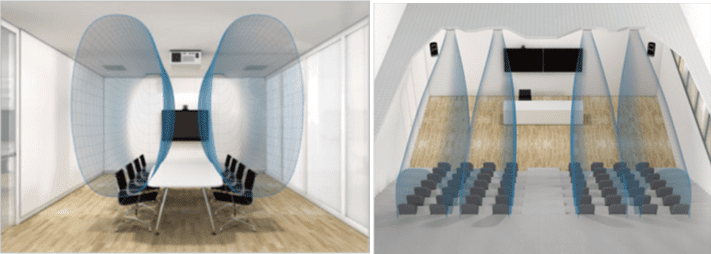Voice lift for video conference applications in board rooms or lecture halls can be tricky and do require a little planning and expertise. At the outset, ignoring the type of room that we are working with, particularly the nature and location of hard surfaces. may lead to undesired results for the client. Additionally, if the space is lively, room acoustical treatment may be required.
Additionally, placement of the microphone array should not be near a noise source such as an HVAC duct, a fan, noisy lighting, etc. Other considerations include, building code, using proper cabling, conduit requirements, raceways and of course accessibility of the ceiling. This all needs to be taken in to account when designing and installing conferencing microphones.
A leading go-to solution is the beyerdynamic MPR 210 Ceiling microphone. This array device has 17 capsules that are engineered to build an audio corridor pickup pattern. As an example of this powerful technology, one can be as little as 2-3 feet from the MPR 210 and talking normally. While speaking at the same level, 15-20 feet away, the microphone would have very similar properties. This is of course based on room acoustics.
The below images exemplify 2 typical MPR 210 installations. Notice the audio corridors generated by each of the MPR 210 array microphones. Audio from the local side (near end) does not usually get transmitted to the near end speakers as this would cause issues with the microphone. The audio from these microphones is transmitted to the remote end (far end) as to not interfere with the local audio.
